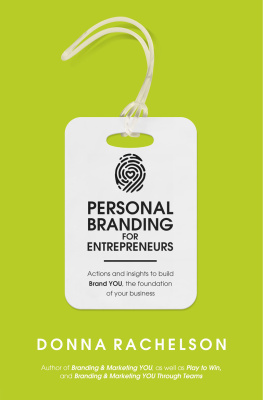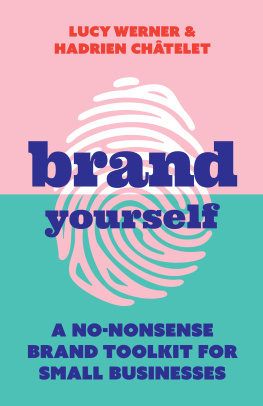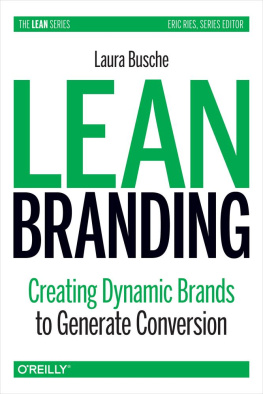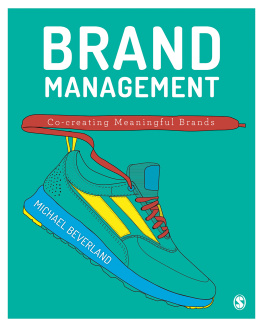Book of Branding
a guide to creating brand identity for startups and beyond
Radim Malinic
Brand Nu Ltd.
Contents
Book of Branding
a guide to creating brand identity for startups and beyond
Radim Malinic
Join my Author club
Radim Malinics Author Club members get free books samples, behind the scenes and notifications of new book pre-sales.
Members are always the first to hear about Radims new projects, books and publications.
See the end section on how to sign up.
Enjoy the book.
First published in the United Kingdom in 2019 by Brand Nu Limited, www.brandnu.co.uk
www.brandnu.co.uk
Book of Branding - a guide to creating brand identity for startups and beyond 2019 Radim Malinic
2021 Kindle Edition
The right of Radim Malinic to be identified as author of this work has been asserted by him in accordance with the Copyright, Design and Patent Act 1988.
Editor Emily Gosling
All showcase images and photos by Brand Nu unless otherwise stated.
Illustration by Tamas Arpadi
Creative direction and design by Radim Malinic
British Library Cataloguing-in-Publication Data A catalogue record for this book is available from the British Library
All rights reserved. No part of this publication may be reproduced or transmitted in any form or by any means, electronic or mechanical, including photocopy, recording or any other information storage and retrieval system, without prior permission in writing from the publisher.
All logos and trademarks used herein are the property of their respective owners. The use of any trademark in this book does not vest in the author or publisher any trademark ownership rights in such trademarks, nor does the use of such trademarks imply affiliation with or endorsement of this book by such owners.
Brand Nu is a registered trademark of Brand Nu Limited.
ISBN 978-0-9935400-3-5 [Print]
ISBN 978-0-9935400-6-6 [Ebook]
To find out more about this publication or the author, please visit brandnu.co.uk or bookofideas.co.uk
For Harper and Jesse
Contents
Foreword
Everyones days are full of intriguing encounters. Observing the world when just walking down the street of any metropolis or taking a break in a coffee shop shows that we live in a multicultural society filled with a multiplicity of colours, languages and sounds.
Each of us comes from a unique place and carries an individual worldview. But each of us can identify with one another on some level whether through our principles, interests or faith. People naturally gather in tribes. Some of these have existed for centuries; others are forming right now, built up through commonalities that vary from cultural background to fashion or music.
Brands have long provided millions of people with a sense of belonging, regardless of their origins, skin colour or political views. The best of these modern churches are built from a place of inclusivity and purpose. Such brands now take many forms its no longer the multinational corporations, like a certain red-canned sugary drinks company, that exemplify global brand awareness. Now anyone has the potential and opportunity to build or even better, become a brand.
I grew up in the eccentric 80s, that fabled era of perms, synthpop and neon everything. While its not my favourite decade of the four Ive witnessed so far, there was something magical in some of the brands that emerged then. The focus was on the product first, and brand building second. The plastic toy car was more important than the logo attached to it; the action figure was itself the brand. The 80s was also an era when rock music ruled the world, and I found myself right in the middle of the excitement. Surrounded by countless vinyl albums with big stadium-baiting choruses blasting from the speakers, I knew I wanted to join the tribe of followers who belonged to those bands. It was a pure sense of wanting to subscribe to whatever those bands were standing for. They offered an opportunity for shared conversations, friendship and adventure. This was my first introduction to brand experience, even if I had no idea what that term meant as a youngster.
A few decades later, through my freelance work and in founding my studio Brand Nu, Ive helped countless founders, entrepreneurs and small startups to recreate that magical experience by building worlds in which people feel they can belong. When a tribe of one becomes two and more, all those efforts pay off. The gift of creativity is to make people feel something, and feel something excellent.
Introduction
Theres no greater joy than working with people from across all walks of life on their mission to create a new company that isnt just going to settle for the second-best. Its a myth that the best branding is only produced thanks to huge budgets or for suited-up blue-chip companies. The most amazing things have happened with people who genuinely believe in their business idea, and when weve worked together to amplify their stories through visual systems. Its the power of narratives in brands, and showcasing those visually, that keep us coming back to them.
But over the years, Ive had to learn and decode the best way to collaborate and find a way to make the process enjoyable, too especially when working remotely for those who cant easily pop into town for a meeting.
Any creative task might look like fun from the outside but could be a battle behind closed doors most often when both parties dont learn from previous mistakes and keep repeating them. Early on in my career as a naive young designer, Id assumed that creating accomplished brands with seamless design systems and visuals was pretty achievable. It certainly wasnt that simple. My initial commissioned work was lacking in that it only looked at a tiny part of a bigger picture that I wasnt even aware of. I was often working in a way that was totally disconnected from the rest of the wider brand and its design. When neither the brand nor I knew better, we foolishly tried to make it all work. But of course, such efforts were futile.
That was me many years ago, but Id wager there are many designers starting out who are making exactly the same mistakes I did. You see insular logo design projects, for instance, wielding the word branding when a logo is just one tiny element of that broad term.
True brand identity work is created with meticulous planning, strategy and focus on application across all touchpoints, all of which can ensure the client has the full branding toolkit to operate with. This work is intricate, complex and thorough. It fuses many different moving parts to form the overall identity, and subsequently make the brand exist.
The pages of this book showcase how I believe this work should be conducted. Ive distilled the process into simple, bitesize chunks that each link to one another. Creating brand identities is a little like a mathematical equation: if one of the elements is missing or incorrect, things simply wont add up. Youll find anecdotes and case studies alongside tips to showcase how I approached the work, regardless of the size of the startup or the industry they operate in.










